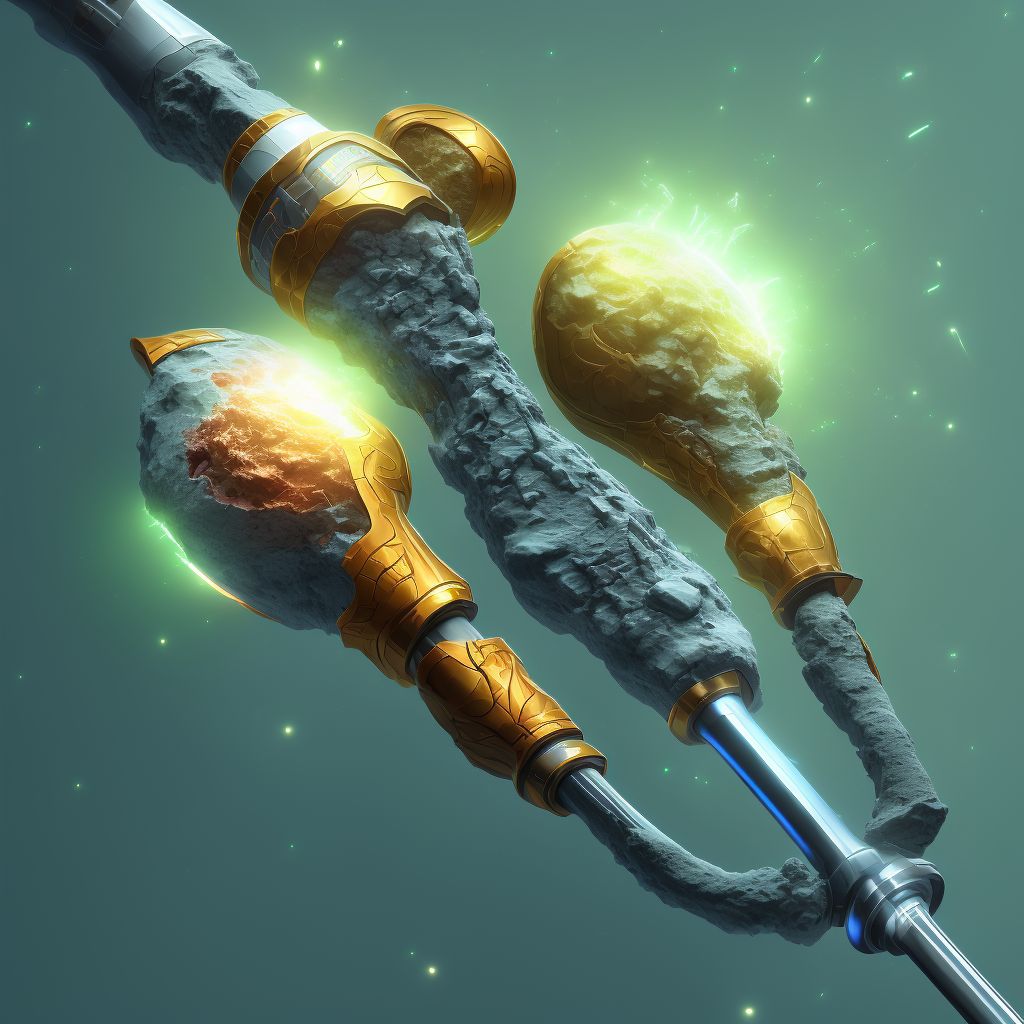
Displaced oblique fracture of shaft of right tibia, subsequent encounter for open fracture type I or II with malunion Save
ICD-10 code: S82.231Q
Disease category: S82.231: Displaced oblique fracture of shaft of right tibia
Displaced Oblique Fracture of Shaft of Right Tibia: Understanding the Condition
A displaced oblique fracture of the shaft of the right tibia is a serious injury that requires medical attention. This type of fracture occurs when the tibia, or shinbone, breaks at an angle, resulting in the bone becoming misaligned. The subsequent encounter for an open fracture type I or II with malunion refers to a follow-up visit after the initial treatment, where the bone has not healed properly.
When a displaced oblique fracture occurs, it is crucial to seek immediate medical care. The fracture may be caused by high-impact accidents, such as falls or sports-related injuries. Symptoms of this injury may include severe pain, swelling, bruising, and difficulty walking or bearing weight on the affected leg.
During the initial treatment, the orthopedic surgeon will aim to realign the broken bones and stabilize them using various methods. However, in some cases, the bones may not heal properly, leading to malunion. Malunion refers to when the bone heals in an incorrect position, causing functional limitations or deformity.
- Causes: Displaced oblique fractures of the tibia can occur due to traumatic incidents, such as car accidents, falls from heights, or sports injuries.
- Symptoms: Common symptoms include severe pain, swelling, bruising, difficulty bearing weight, and a visible deformity.
- Diagnosis: A displaced oblique fracture can typically be diagnosed through physical examination, X-rays, and sometimes, additional imaging tests like CT scans.
- Treatment: The subsequent encounter for open fracture type I or II with malunion involves evaluating the bone's healing progress and determining the best course of action to correct the malunion.
It is essential to follow up with your healthcare provider for regular check-ups and assessments to ensure proper healing and prevent any long-term complications. Treatment options for malunion may include non-surgical interventions like physical therapy or surgical procedures to realign the bones.
In conclusion, a displaced oblique fracture of the shaft of the right tibia is a serious injury that can lead to malunion if not treated properly. Seeking immediate medical attention and following up with your healthcare provider is crucial to ensure proper healing and restore functionality to the affected leg.
Treatment of Displaced oblique fracture of shaft of right tibia, subsequent encounter for open fracture type I or II with malunion:
Treatment Options for Displaced Oblique Fracture of Shaft of Right Tibia, Subsequent Encounter for Open Fracture Type I or II with Malunion
When it comes to a displaced oblique fracture of the shaft of the right tibia, subsequent encounter for an open fracture type I or II with malunion, there are several treatment options available. These options aim to promote healing, alleviate ...
To see full information about treatment please Sign up or Log in